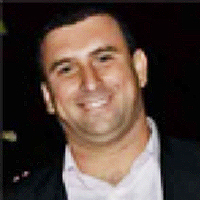Retinopathy of prematurity - Intersibling divergence of risk factors among twins
Published on: 19th February, 2020
Retinopathy of prematurity (ROP) is a consequence of an arrest in normal retinal neural and vascular development, which determines the aberrant retinal regeneration [1,2].
ROP is a disease process mostly reported in preterm neonates ranging from mild, transient changes in the retina with regression to severe progressive vasoproliferation, scarring, detachment of retina and blindness and it is common blinding disease in children and a major cause of vision loss among preterm infants [3]. Today it is well known that oxygen therapy is not the single causative factor, but many other risk factors play a causative role in the pathogenesis of ROP [4,5].
The risk factors for ROP include oxygen administration, hypoxia, hypercapnia, blood transfusion exchange transfusion, apnea,sepsis and total parenteral nutrition. The incidence of ROP has been reported to be similar in multiple and singleton births [6-8]. Twin studies show that from 70% to 80% of the susceptibility to ROP is conditioned by genetic factors [9,10].
Hence this study is to find out the incidence of ROP in twins in a tertiary care centre in a developing country. It also attempts to identify the difference in risk factors among twins which predispose to ROP in Neonatal Intensive Care Unit.
An Interesting Case of COPD Exacerbation Presenting with Mixed Features of Intracranial Hypertension and Hypercapnic Encephalopathy
Published on: 2nd July, 2024
Background: Idiopathic intracranial hypertension (IIH or pseudotumor cerebri) has two major morbidities: papilledema with visual loss and disabling headache. Intracranial Venous Hypertension (IVH) is a fundamental mechanism of IIH. Although traditionally considered limiting to the central nervous system, evidence suggests IIH as a systemic disease associated with cardiorespiratory disorders, which has been far less comprehended. Case Report: A 60-year-old female with Chronic Obstructive Pulmonary Disease (COPD) was admitted for dyspnea and developed a coma with a pH of 7.01 and pCO2 of 158 mmHg. She was intubated and had persistent nuchal rigidity, a brief myoclonus episode with a negative electroencephalogram, and negative CT head studies. A Lumbar Puncture (LP) revealed elevated opening pressure (35 cmH2O) with normal Cerebral Spinal Fluid (CSF) studies. Her nuchal rigidity improved after the removal of 40 mL CSF. The ophthalmology examination the next day after her the large volume LP didn’t show visual loss or papilledema. The patient improved clinically and was extubated two days later. Her echocardiogram showed a dilated right ventricle with pulmonary hypertension. The patient was discharged home.Discussion: IIH is different from hypercapnic encephalopathy and characterized by increased intracranial pressure with papilledema, vision loss, and debilitating headache. Hypercapnia-induced increased intracranial venous flow and pulmonary hypertension-caused elevated central venous pressure with consequent outflow resistance lead to IVH. In hypercapnic encephalopathy, the presentation is mostly cognitive changes. In this case, nuchal rigidity with a negative CT head scan triggered the investigation of IIH. Conclusion: A deep understanding of the relationship between COPD and IIH is vital. There is insufficient evidence to recommend routine eye examinations in COPD patients for papilledema and to conduct a pulmonary function test for a newly diagnosed IIH patient. However, we highly suggest a timely ophthalmology exam prior to performing an LP in COPD patients with suspecting IIH to avoid unnecessary procedures and meanwhile improve clinical outcomes.




